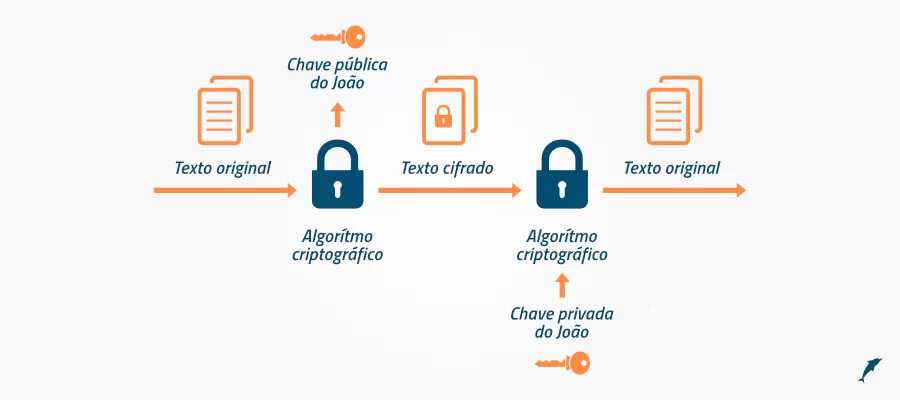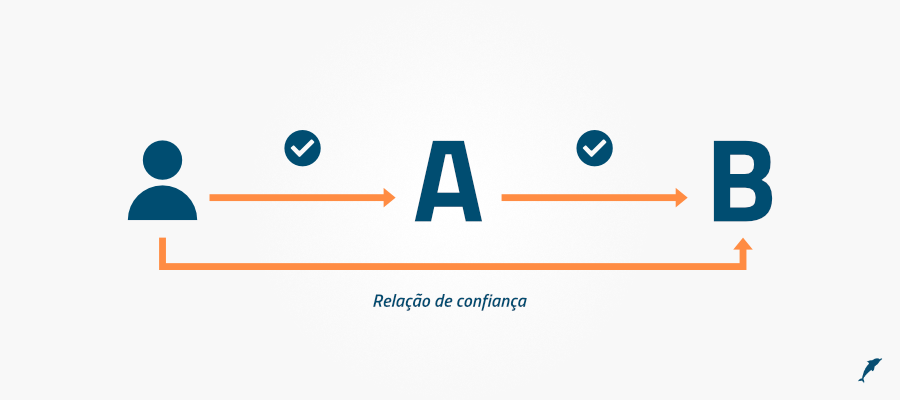Many organizations face difficulties in implementing an effective cryptographic key management system. This is due in part to the complexity of the process and the tools needed to implement and maintain a secure system. This is when HSM in the cloud makes the difference.
To reduce complexity in Cryptographic Key Management, companies implementHardware Security Modules (HSM) solutions that can be deployed on-premises or in the cloud.
HSM in the cloud overcomes the challenge of Cryptographic Key Management
HSM in the cloud basically consists of a secure hardware device that is being managed by a cloud provider.
The cloud provides access to cryptographic keys for the business applications that need them, without exposing the keys to the security risks associated with the Internet.
Companies are increasingly interested in using the cloud for their business because of the advantages it offers, such as flexibility, scalability, and cost-effectiveness.
By allowing keys to be managed outside the corporate network, the cloud simplifies the process and makes it more secure.
This means that keys no longer have to be stored in a single location and can be accessed from anywhere in the world, 24 hours a day.
Managing cryptographic keys using HSM in the cloud also offers more flexibility in terms of scalability.
Keys can be created and managed dynamically to meet business needs, without the need for a large up-front investment.
HSM in the cloud also allows keys to be easily shared across different departments and geographies, which simplifies collaboration and makes it easy for teams to work together.
Finally, cryptographic key management using HSM in the cloud offers greater control and traceability. Keys can be tracked and monitored to ensure they are being used according to company policies.
Are Cloud Cryptographic Key Management as secure as on-premise HSMs?
When it comes to security, people tend to think that “local is always better”. However, this is not always true, especially when it comes to cryptographic key management.
In fact, many organizations are discovering that using cloud HSMs can offer more security than on-premise security modules.
This is because cloud HSMs are generally more secure than on-premise HSM. After all, they are running in a secure environment being managed by highly experienced security teams.
In addition, Cryptographic Key Management using cloud HSMs generally have more security features than on-premises security modules, which means they are less likely to be compromised.
However, it is important to note that cloud HSMs are still susceptible to attacks.
Therefore, organizations should take steps to secure their security modules, as well as look for providers that offer robust security features.
Thales Data Protection on Demand (DPoD): not just security, data protection on demand
Thales Data Protection on Demand is a cloud-based platform that provides a wide range of Cryptographic Key Management services using and HSM in the cloud through a simple online marketplace.
With Data Protection on Demand (DPoD), security is simpler, more cost-effective, and easier to manage because there is no hardware to buy, deploy, and maintain.
Thales Data Protection on Demand is just a click away. Just click and deploy the protection your company needs, provision services, add security policies, and get usage reports in minutes.
Achieve data security quickly and efficiently
With Data Protection on Demand, you have access to a wide range of security services simply by clicking and deploying what you need to protect dozens of applications and use cases.
It’s as simple as that.
Zero upfront capital investment and pay-as-you-go pricing
There is no hardware or software to buy, support, and upgrade, so you have no capital expenditure.
Plus, with unique pay-as-you-grow pricing, you have the flexibility to purchase services to meet your changing business needs.
Protect data anywhere and meet compliance mandates
With DPoD, you can protect sensitive data in any environment, cloud, hybrid or on-premises, to manage your security policies and meet regulatory and compliance requirements. Protect the data you create, store, and analyze.
Enable your applications with cryptography: Blockchain, Cloud, and Internet of Things.
Centralize management of Cryptographic Keys across all clouds
Data Protection on Demand is cloud-independent, so whether you use Salesforce.com, Amazon Web Services, Google, IBM, and Microsoft Azure, or a combination of cloud and on-premises solutions, you are always in control of your encryption key management.
Easily integrate with your cloud, hybrid, and IT services
Data Protection on Demand comes with pre-configured APIs that make it easy to integrate Luna Cloud HSM and cryptographic key management services to protect your applications and data.
With seamless key migration between Luna Cloud HSM services and Luna HSM on-premises appliances, Thales helps customers ensure that their data and the keys to that data are secure.
This holds true regardless of where your information resides. In addition, the company supports third-party HSM integration, common SDK and API support, and high-availability group access for local Luna devices and DPoD services.
Infinite scalability and elasticity
Scale up or down the cryptographic key management and HSM services as your requirements change. You can easily extend cloud and hybrid HSM and key management capabilities and encryption features without limitations.
Focus on your business
Not in the management of security hardware and software. Find out how the Eval and Thales partnership can help your company.
Use Data Protection on Demand and you won’t need to purchase, provision, configure, and maintain hardware and software for your HSM and cryptographic key management needs.
All physical hardware, software, and infrastructure are managed by the existing official partnership between Eval and Thales, including an SLA, so you can focus on your business.
We deploy and manage cryptographic key management module services and hardware security, on-demand and in the cloud.
- Focus on services, not hardware;
- Implants in minutes, not days;
- Buy only what you need and reduce costs;
- Protect data anywhere;
- Real-time reporting and visibility;
- It integrates easily with existing applications, infrastructure, and IT services.
Data Protection on Demand (DPoD) has expanded its service capabilities to include partner-led security services, expanding the value of Thales Luna HSMs’ extensive range of integrations across the entire security ecosystem.
With on-demand data protection, Eval and Thales can offer encryption and key management services quickly and easily.
Eval Professional Services has a team of specialized professionals with the best practices in the market
Benefit from our years of experience and expertise in information security and compliance with the General Data Protection Act (LGPD).
We will be your partner for realizing digitization projects in compliance with security and data protection regulations.
We share our expertise across all business flows in healthcare organizations to help you minimize risk, maximize performance, and ensure the data protection your patients and partners expect.
About Eval
With a track record of leadership and innovation dating back to 2004, Eval not only keeps up with technological trends, but we are also in an incessant quest to bring news by offering solutions and services that make a difference to people’s lives.
With value recognized by the market, EVAL’s solutions and services meet the highest regulatory standards of public and private organizations, such as SBIS, ITI, PCI DSS, and LGPD. In practice, we promote information security and compliance, increase companies’ operational efficiency, and reduce costs.
Innovate now, lead always: get to know Eval’s solutions and services and take your company to the next level.
Eval, safety is value.












